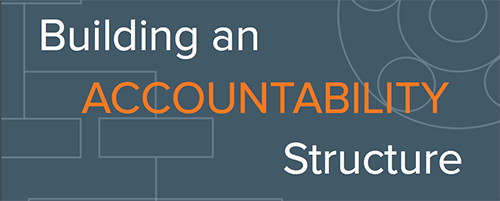Jan 05 2017 Building an Accountability Structure: Guidance from StriveTogether
How do leaders and practitioners working across sectors in communities come together and align efforts toward a bold vision?
In the early stages of developing cross-sector partnerships, StriveTogether Cradle to Career Network communities have found value in building an accountability structure to enable clarity, organization, and communication among diverse partners involved in the work. This structure helps to make explicit the relationships among partners and outlines the unique roles and responsibilities required for an effective cross-sector effort.
The accountability structure is not just an idea — cradle-to-career partnerships around the country have used it to organize cross-sector work for improving educational outcomes. Our toolkit features stories and examples of 13 diverse communities across our Cradle to Career Network: Albuquerque, NM; Boise, ID; Chicago, IL; Cincinnati, OH, and Northern Kentucky; Dallas, TX; the District of Columbia; Milwaukee, WI; Northeast Indiana; Portland/Multnomah County, Oregon; Portland, ME; Spartanburg, SC; Toledo, OH; and Waterbury, CT. Whether hierarchical or concentric, accountability structures enable agreements to be made and kept across individuals and organizations involved.
These communities exemplify the simple principle on which StriveTogether was founded: Those who care about a community’s children – from parents and educators to civic leaders and local employers — can accomplish more by working together than by working apart. In nearly 70 communities around the country, our partnerships share a common goal and work to ensure that every child — regardless of race, zip code, or family income — succeeds from cradle to career.
An accountability structure is an important component of this work. Just as no two students are alike, no two accountability structures are identical — they are developed and implemented based on the unique needs of leaders and practitioners in each community. These stories and examples bring to life the on-the-ground experience of how leaders in communities have successfully organized groups of leaders and practitioners.
Use this toolkit to understand the importance of establishing an accountability structure, learn about the various roles a partnership plays, and determine how different groups of partners are convened to play these roles. Because local contexts are unique, different types of accountability structures may be effective. The Accountability Structure Worksheet can help to uncover common challenges and identify the right structure for your community.
Keep in mind an accountability structure is a living document. As the partnership evolves, it can be helpful to revisit and refine aspects of this structure. And, as the work evolves, how partners are organized may change to support the ultimate results of eliminating disparities and improving outcomes.
Parvathi “Parv” Santhosh-Kumar is the Director, Network Learning for StriveTogether, where she manages learning and activation strategies to support cradle to career partnerships to accelerate progress to Proof Point and influence the broader field. Parv previously led the launch and early implementation of the Cradle to Career Accelerator Fund, including supporting the StriveTogether Leadership Program in partnership with the Annie E. Casey Foundation. Parv previously served as Associate Director of Education Policy in the Office of Chicago Mayor Rahm Emanuel. She earned a B.A. in American Studies from Northwestern and a Master in Public Policy from Harvard. She is based in Chicago, IL.

